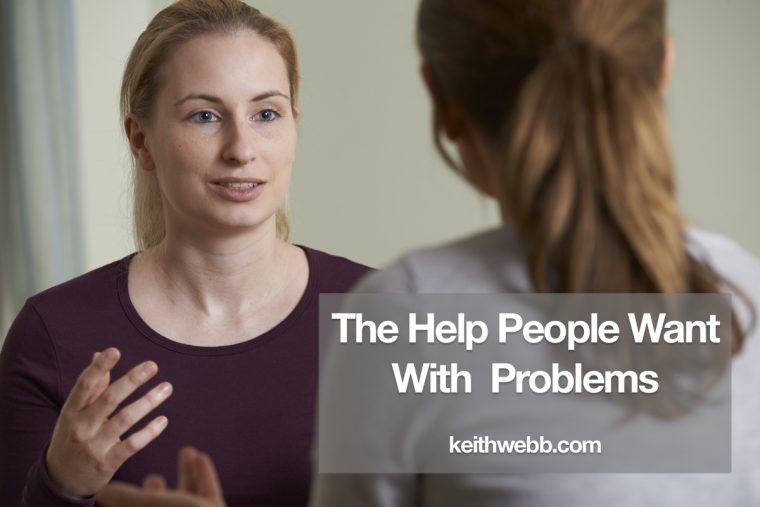I’m a fixer. Bring me a problem and I’ll give you a solution. The trouble is, people don’t always want my solutions. Even when they think I’m probably correct, they will go ask someone else. The reason is, they are looking for another kind of help.

The Help People Want With Problems
When people ask for help, it can be interpreted as a request for actions to solve their problem. However, I’ve discovered that most people are not looking for actions, they’re looking for understanding about their problem so they can create their own solutions to solve it.
Look at it more closely:
- People want to understand their problem – what’s happening and why.
- They won’t move forward without this understanding.
- When they are ready to move forward, they want to do it their own way, not your way.
When you or I offer action solutions, we disregard all three of these points. We skip or gloss over their understanding of what’s happening and why, and push them to move forward with our solution. People want our help, but don’t want to be told what to do.
It’s helpful to differentiate between two types of solutions: 1) Action-solutions; and 2) Understanding-solutions.
Action-Solutions
In trying to help people, it might feel efficient to jump immediately to action-solutions. But it doesn’t work. Even when we ask action-oriented questions. Consider these common action questions:
- What have you tried? (past actions)
- What are you doing about it? (current actions)
- What’s your next best step forward? (future actions)
Asking these questions too soon in the conversation could be interpreted as judging or condescending. After all, I know what I’ve tried, what I’m doing about it, and, don’t you think I’ve considered my next best step forward?
Understanding-Solutions Come First
What is happening and why are understanding-solutions. Think: What & Why. Only after we’ve explored What & Why do we turn the conversation to How (action-solutions).
It’s difficult to fully understand what happened and why, but we can listen to the person and explore. Consider these questions to surface the What & Why:
- What happened?
- What does this mean to you?
- What parts are you clear on? Fuzzy on?
- What is your [boss’s, team’s, colleague’s, spouse’s] perspective on this?
- What key questions do you have about this situation?
- What’s coming up for you as we talk about this?
Understanding-solutions are a listening ear, empathy, and some new perspective on the problem. It could be a different way to look at the problem, or some previously unnoticed causes, or greater self-awareness for how the person is responding to the problem.
Some of the questions draw the person to reflect on their own internal processing of events (What does this mean to you?).
All these are understanding-solutions and are just as essential as action-solutions. In fact, as I mentioned, people won’t be ready for action-solutions until they have understanding-solutions.
The principle is: What & Why first, then How.
Not only does this process produce better solutions, it teaches the person how to find their own solutions to future problems.
You can leave a comment by clicking here.


Thanks Keith!
Very timely for me re: a meeting I have coming up on Saturday.
Blessings from Peachtree Corners, GA
Eric Ressler
Great summary of the questions people want to be asked in getting past their hurdles.
Thanks Keith.